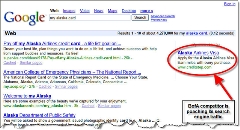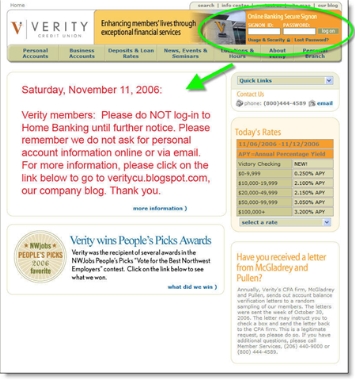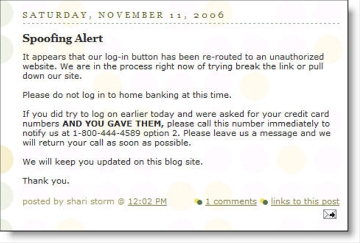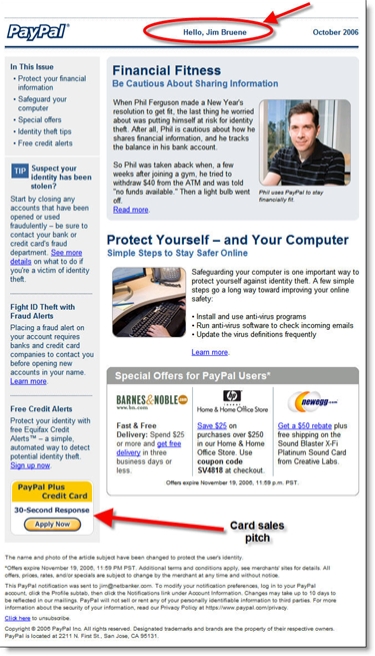At 8:30 AM today, we heard an unusual advertisement on classic rock radio for the Bank of America Alaska Airlines affinity card.
It wasn't the ad itself that was so spectacular, although it's not every day that you hear credit cards being pitched on radio. And it wasn't the offer that made the ad stand out, although 20,000 bonus miles is a pretty good perk.
What made it memorable was the call to action, "visit myalaskacard.com." They didn't even bother to throw an 800 number into the spot.
It's hard to say whether a radio spot will prove cost effective, but using a memorable URL should help. It's far easier to remember than a telephone number, and prospective applicants can be immediately greeted with an effective sales pitch reinforcing the product benefits and bonus offer.
Analysis
 However, once again BofA stumbles with its search engine support (see previous article). Searching on Google for "my Alaska card" brings up a single ad for a Web-based portal site, CreditStep.com (click on inset for closeup).
However, once again BofA stumbles with its search engine support (see previous article). Searching on Google for "my Alaska card" brings up a single ad for a Web-based portal site, CreditStep.com (click on inset for closeup).
In fact, we tested every variation of "my" + "alaska" + "airlines" + "credit" + "card" and BofA was nowhere to be seen UNLESS we dropped "my" from the search query. Interestingly, Chase was an aggressive advertiser on several of the search terms offering a competing airline card with 15,000 bonus miles. BofA showed up as an advertiser only when we dropped the "my" from the search query.
The lack of advertising against "my alaska card" is especially damaging because the first few organic search results do not link to BofA or Alaska Airlines. Also, if you type a similar URL, such as www.alaskacard.com or www.alaskaairlinescard.com you either end up at a generic link site or an error page. At this point, potential prospects will either apply at the wrong place or give up on the search.
If you correctly input the exact URL, you end up at the following landing page. It's OK, but should reinforce the impressive benefits of applying now, a free ticket right away and a $50 companion ticket every year on renewal (see screenshot below).
Action Items
Here's what you should do to ensure better search-engine support for your offline advertising:
- Advertise at search engines on likely search terms that would be used by consumers responding to your advertising
- Create a memorable URL that is not easily mistyped
- Register or purchase domains similar to the advertised URL (including common misspellings), or pay the owner to refer traffic to your landing page
- Design a landing page that boldly supports the benefits in your advertising and includes a prominent "Apply" button















